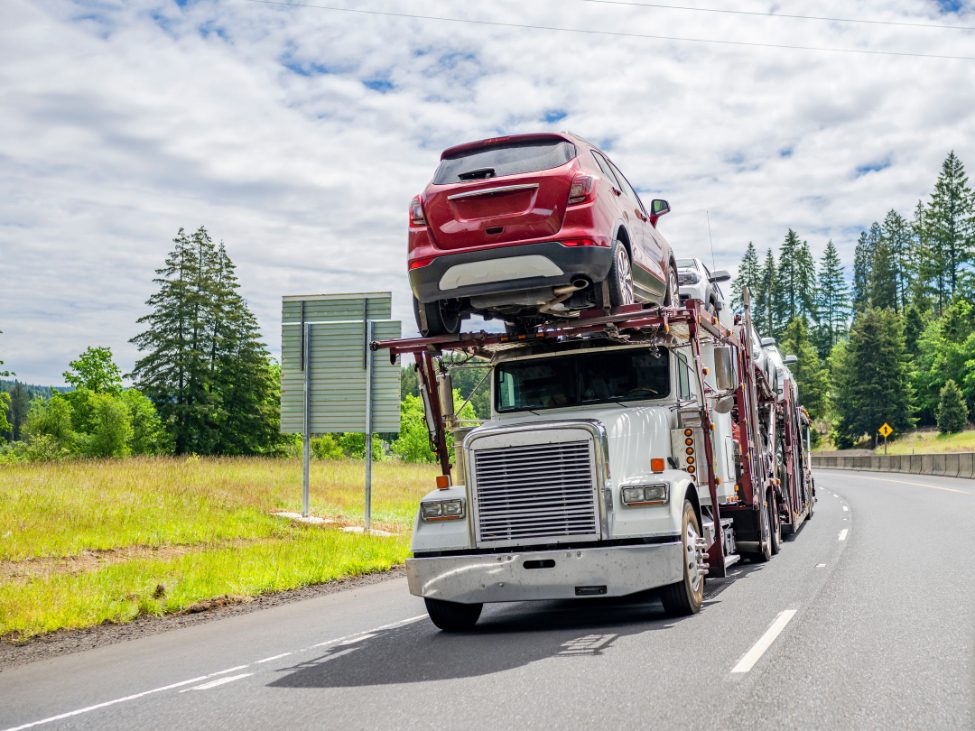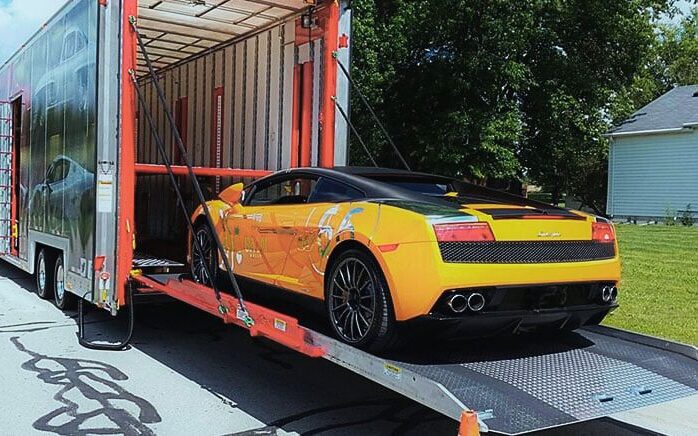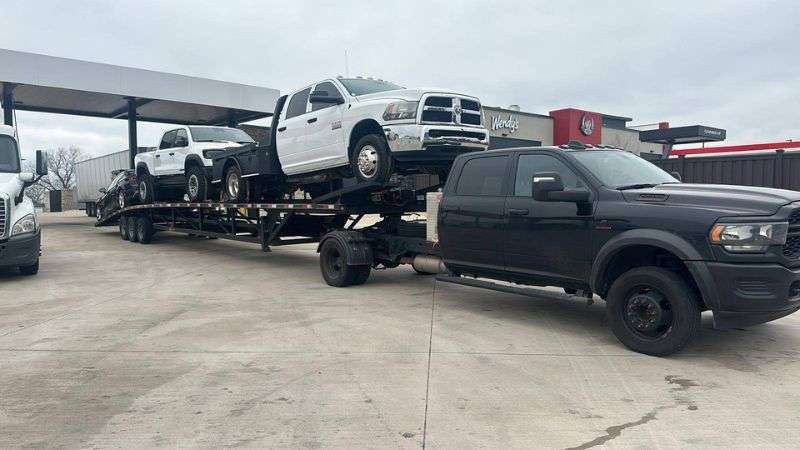Military Car Shipping
PCS Move Car Shipping Solutions Nationwide · Open & Enclosed Car Transport Options
How Does Military Car Shipping Work?
If you’re an eligible service member assigned to a new duty station, you have the right to take advantage of PCS (Permanent Change of Station) vehicle shipping. The Department of Defense allows you to ship one privately owned vehicle (POV) at the government’s expense, making your transition smoother.
However, there are a few details to keep in mind. If you need to use an alternate port for your vehicle’s shipment, you’ll need approval from the Military Traffic Management Command (MTMC). We understand that this can seem like just another task on your already busy to-do list, but we’re here to help make the process as seamless as possible.
Our team is experienced in handling military vehicle shipping, and we’re committed to ensuring your vehicle reaches your new duty station safely and on time. We’re here to support you every step of the way.
At Beeline, we believe in simplifying your military PCS vehicle shipping. That’s why we suggest door-to-door transport—it’s just easier. You can count on us to seamlessly transport to and from any location in the U.S., military bases included. We understand how precious your time is. That’s why at Beeline Auto Transport, we also provide a special military car shipping option. This ensures a guaranteed pick-up on a day that suits your schedule.
Military Car Shipping: Open vs. Enclosed Carriers
The most common method of shipping cars is through open carriers. However, enclosed transport is sometimes preferred. It all depends on the type of vehicle you wish to transport — and it’s financial and sentimental value.
Open carriers are typically less expensive than enclosed carriers, as they can transport more cars at once and don’t require as much specialized equipment. However, open carriers leave vehicles exposed to the elements and potential road debris.


Enclosed carriers, on the other hand, offer greater protection for the vehicles being transported. They are typically used for high-end or vintage cars that require extra care and attention. Enclosed carriers also offer more privacy and security for the vehicles being transported.
Ultimately, the choice between open and enclosed carriers depends on the specific needs and preferences of the car owner. If cost is a major factor and the vehicle being transported is not particularly valuable, an open carrier may be the best option. However, if the vehicle is a prized possession or requires extra protection, an enclosed carrier may be the way to go.
Our transport specialists can help you determine which option is the right one for you. Get in touch with us today!
Seamless Car Shipping For Military Members
Whether you decide to go with an open or enclosed car shipping, our transport specialists are here to help you with all your car shipping needs. We will guide you through the process and answer any questions you may have to ensure that you have all the information you need before booking our car shipping service.
You can easily get in touch with us either online or over the phone. Simply provide us with the details about your car, including where it needs to be picked up and where it’s headed. Once you decide to use our car shipping service, placing your order online is a breeze. We will help you schedule a pickup window that is convenient for you.
After we gather all the necessary information, we will connect you with a reliable driver who will take care of your vehicle in transit. It is important to prepare your car for the journey to ensure that it arrives at its destination in good condition.
Upon delivery, our driver will inspect the vehicle with you to confirm that it arrived in the same condition it was picked up in. If you have any questions or concerns during the delivery process, our representative is available to assist you at any time. Trust us to provide you with a hassle-free and safe car shipping experience.


Does The Government Pay For Military Car Shipping?
As an active military member, you might be wondering if the military will cover the shipping costs for your car. Good news: If you’ve received permanent change of station (PCS) orders, the military will take care of shipping one privately owned vehicle for you, as per the Department of Defense.
If you have multiple POVs that need to be moved to your new station or aren’t eligible for government support, we’ve got some additional info on military car shipping prices for you:
How Much Does Military Car Shipping Cost?
When it comes to car shipping, the cost can vary based on a multitude of factors. Every vehicle and route is unique, which is why consulting with a transport specialist is crucial to get an accurate estimate.
While online car shipping cost calculators can be convenient, they may not always provide an accurate representation of the final cost.
It’s also important to be cautious of lowball prices, as they could potentially hide additional fees or lead to unexpected price increases after signing the contract.
By working closely with a transport expert, you can ensure a smooth and transparent car shipping process without any surprises along the way.
| Type of Car | The shipping cost is influenced by the type of car that you want to transport. Larger vehicles such as SUVs and trucks incur higher shipping costs because of their size and the fuel and labor needed. Due to their size, larger vehicles take up more space on transport trucks, leading to higher expenses. |
| Car condition | The shipping process is impacted by the overall condition of your car. Inoperable vehicles call for extra equipment and labor to ensure secure transportation. Vehicles unable to independently drive onto carriers will need specialized equipment such as a winch for loading and unloading. |
| Distance | The distance of the shipment is one of the main factors in calculating the cost of car shipping. Longer distances typically result in higher costs because of the increased fuel and labor needed. |
| Type of carrier | The method of transport or type of carrier influences the overall cost. Open transport, where vehicles are shipped on open trailers with others, is more cost-effective. Enclosed transport, where vehicles are shipped in closed containers, is pricier but provides better protection. |
| Seasonal fluctuations | Seasonal variations greatly impact car shipping costs. High demand during peak summer months can lead to price hikes. Conversely, lower demand in the off-season may result in reduced prices. However, adverse weather conditions such as heavy snow in winter can cause delays and increased expenses. |
| Fuel price | Fluctuations in fuel prices can directly impact the overall cost of transporting a vehicle. Higher fuel prices can result in increased shipping costs as carriers pass on these expenses to customers. On the other hand, lower fuel prices may lead to more competitive rates for car shipping services. |
The Cheapest Way to Ship a Car
So what is the best way to keep military car shipping cost to a minimum? If you keep a few things in mind, you can avoid unnecessary costs for transport.
Opt for open transport: The standard and most economical way to ship cars in the industry.
Ensure your car is operable: Carriers charge extra for handling inoperable vehicles, so make sure your car runs and drives.
Plan ahead: Booking in advance helps avoid expedited or last-minute fees.
Keep your schedule flexible: A flexible schedule often leads to more budget-friendly quotes.
Consider low-season transportation: Shipping a car is usually cheaper during winter compared to summer.
Choose major city locations for pickup and delivery: If you live in a rural area, arranging for car pickup and drop-off near a major city can be more cost-effective.
Transport multiple cars: Shipping more than one vehicle on the same truck can result in savings.
Serving All 50 States
Including Hawaii and Alaska

Alabama — Alaska — Arizona — Arkansas — California — Colorado — Connecticut — Delaware — Florida — Georgia — Hawaii — Idaho — Illinois — Indiana — Iowa— Kansas — Kentucky — Louisiana — Maine — Maryland — Massachusetts — Michigan — Minnesota — Mississippi — Missouri — Montana — Nebraska — Nevada — New Hampshire — New Jersey — New Mexico — New York — North Carolina — North Dakota — Ohio — Oklahoma — Oregon — Pennsylvania — Rhode Island — South Carolina — South Dakota — Tennessee — Texas — Utah — Vermont — Virginia — Washington — West Virginia — Wisconsin — Wyoming
Got more questions?
We can help.

